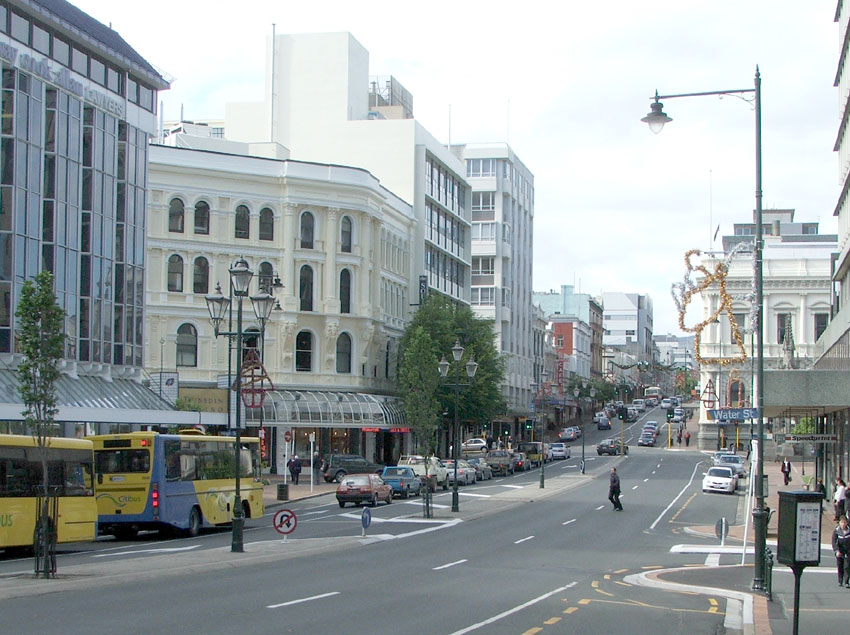22 School Transport Management
22.0.1 Implications for the research project
School transport is a significant portion of local travel. School transport management can reduce vehicle trip, and by encouraging young people to rely on resource-efficient modes, can support long-term vehicle travel reductions.
22.0.2 Description
Policies and programs that help and encourage students and staff to reduce automobile travel and use resource-efficient modes when travelling to and from schools. This often starts with a review of obstacles to non-auto travel to schools, targeted pedestrian, bicycle and public transit improvements, school policy changes to favor non-auto travel, and promotion campaigns to encourage students, parents and staff to reduce driving.
The New Zealand Ministry of Education sponsors school transport programs that primarily support school buses (https://schooltransport.org.nz/school-transport-in-new-zealand). Auckland Transport provides information on walking school buses (https://at.govt.nz/cycling-walking/travelwise-school-programme/walking-school-bus), but there seems to be no national support for non-auto school travel. A recent study by Smith, et al. (2020) concludes that active travel rates are relatively low in New Zealand compared with peer countries, and that establishing national targets and providing resources may be effective ways to increase non-auto travel to schools.
22.0.3 Type of travel affected
Automobile trips to school. This typically represents 5-15% of urban-peak trips, and 1-3% of total vehicle travel.
22.0.4 How travel and emission effects can be measured and modelled
Typical vehicle trip reductions times (programs typically reduce affected vehicle trips by 20-40%), times the portion of students and staff who current travel by car, times the portion of schools that implement this initiative. Since automobile trips to school often involve empty backhauls (an adult drives a child to school, returns home, and later in the day drives back to the school, and then returns home), total vehicle travel reductions can be particularly large.
22.0.5 Secondary impacts
School transport management programs can improve non-auto travel conditions, providing direct benefits to students who walk, bicycle and use public transit, cost savings to households, and health benefits from more active travel, and by reducing local vehicle traffic help reduce congestion, infrastructure costs, crash risk, noise and local air pollution.
22.0.6 Key Information sources
ELTIS (2021), Planner’s Guide to Sustainable Urban Mobility Management and Toolbox for Mobility Management, Urban Mobility Observatory (www.eltis.org); at www.eltis.org/resources/tools/toolbox-mobility-management.
This report includes a section titled, "Manual for kindergartens & schools" which describes how communities can implement school travel management programs. It describes program requirements, benefits and costs, and examples of success.
FCM (2019), Engaging Students to Increase Public Transit Ridership: A Guide for Using City–School Partnership to Inspire Youth to Choose Sustainable Transportation, Federation of Canadian Municipalities (https://fcm.ca); at https://bit.ly/3cEPNlX.
Mackie, H. (2009), Improving School Travel Systems, Report 420, NZ Transport Agency (www.nzta.govt.nz); at www.nzta.govt.nz/assets/resources/research/reports/420/docs/420.pdf.
This report policies and programs needed for New Zealand to realise the benefits of an optimised school travel.
McDonald, Noreen C. et al. (2014), "Impact of the Safe Routes to School Program on Walking and Bicycling," Journal of the American Planning Association, Vo. 80/2, pp. 153-167 (DOI: 10.1080/01944363.2014.956654); at https://activelivingresearch.org/SRTSreview.
Study finds that safe routes to school programs do increase walking and bicycling, providing health benefits and financial savings that repaid program costs many times.
National Center for Safe Routes to Schools (www.saferoutesinfo.org) is a U.S. federally funded center which provides information on how to start and sustain a Safe Routes to School program, case studies of successful programs, and other resources for training and technical assistance.
Smith, M. et al. (2020), "An integrated conceptual model of environmental needs for New Zealand children’s active travel to school," Journal of Transport & Health, Vo. 16 (https://doi.org/10.1016/j.jth.2019.100814).
Weiss, Hank (2012), Caution! Paradigm Shift Ahead: "Adolescent Mobility Health, Adolescent Mobility Health Consortium (https://blogs.otago.ac.nz/amc); at https://blogs.otago.ac.nz/amc/caution-paradigm-shift-ahead-adolescent-mobility-health.
Argues that policies and programs that encourage adolescents to drive less and rely more on active modes can provide direct health and safety benefits, plus long-term sustainability benefits.





























